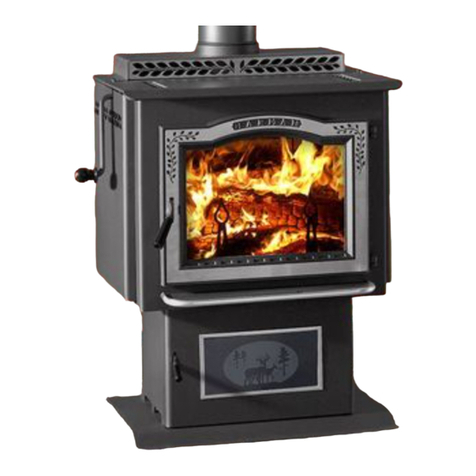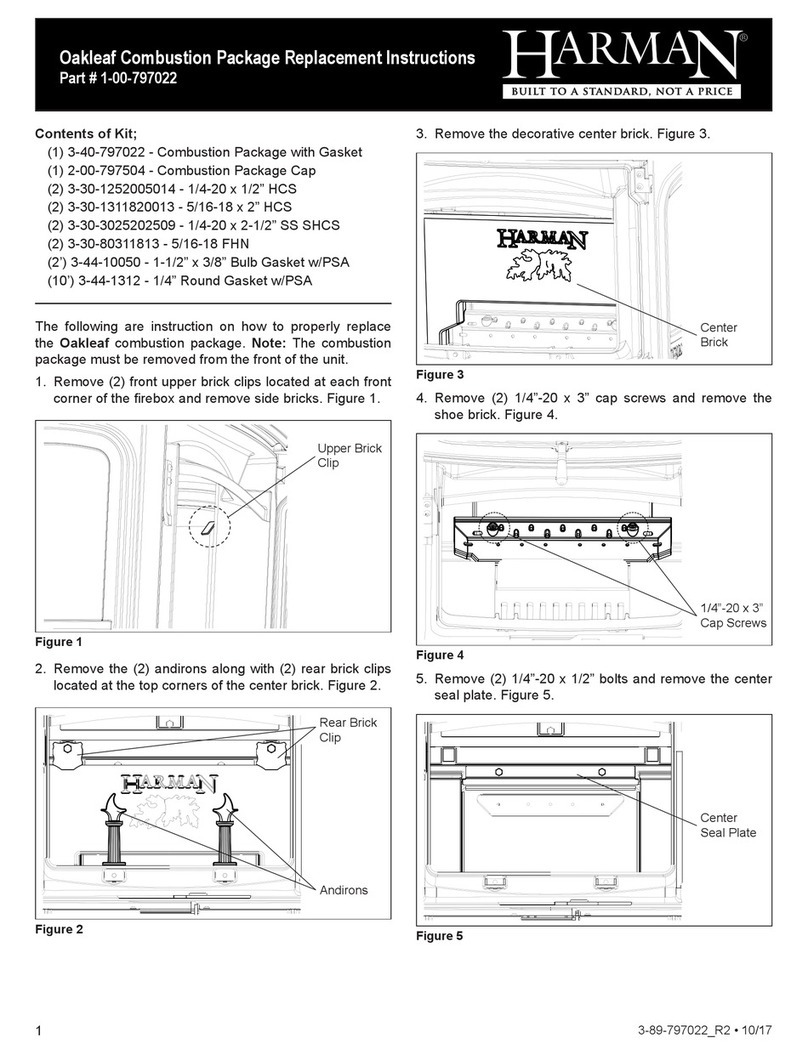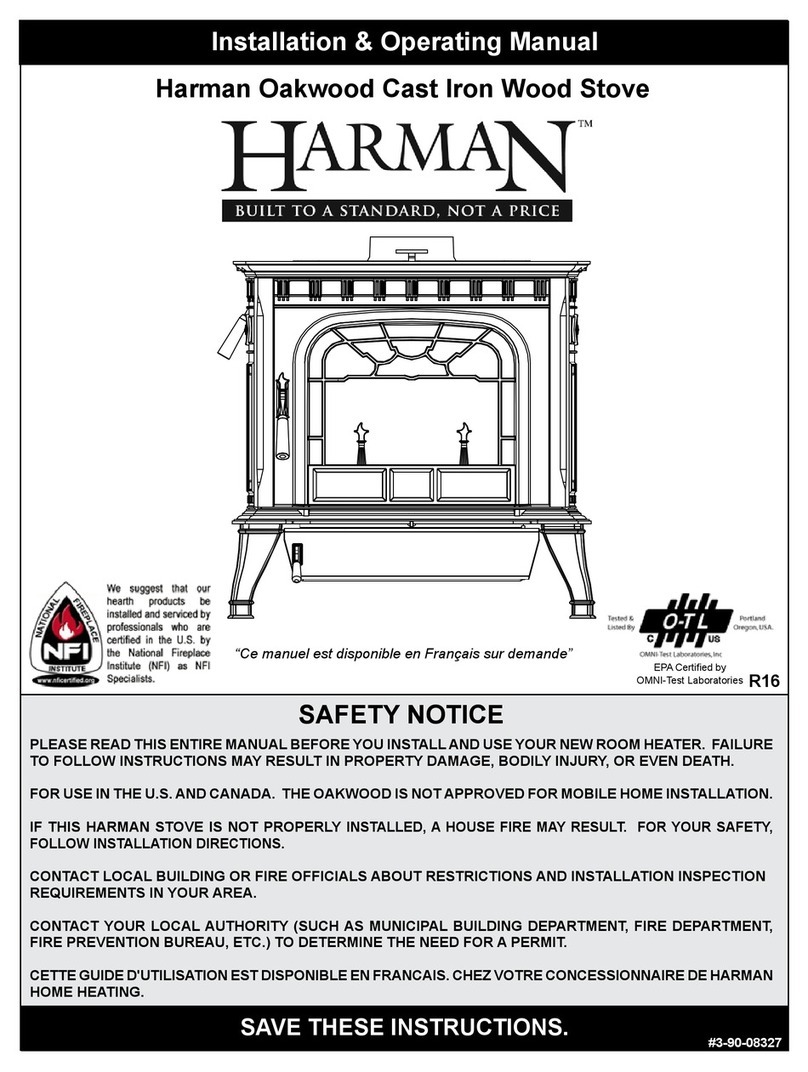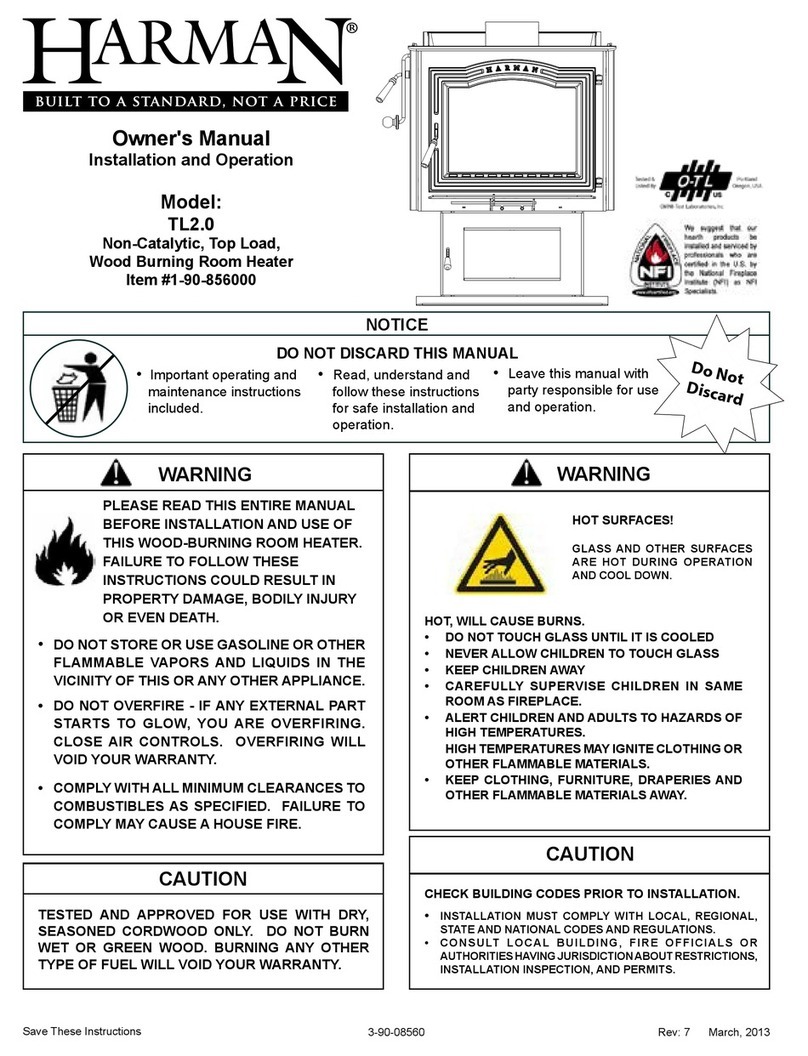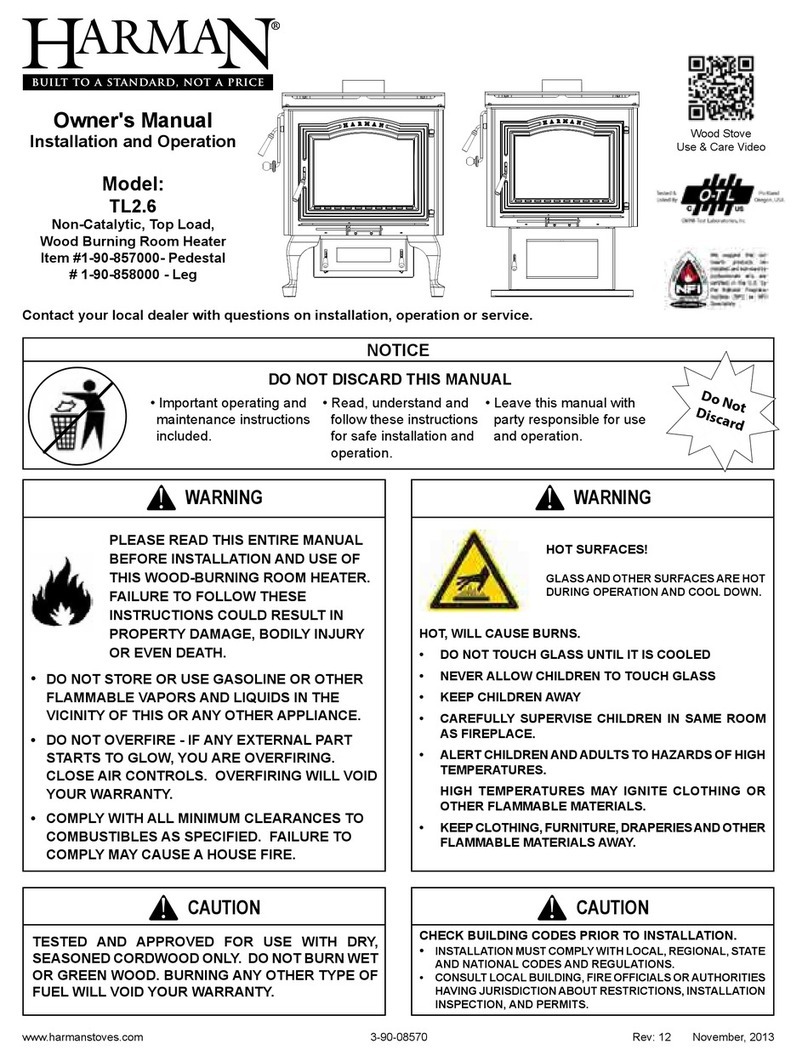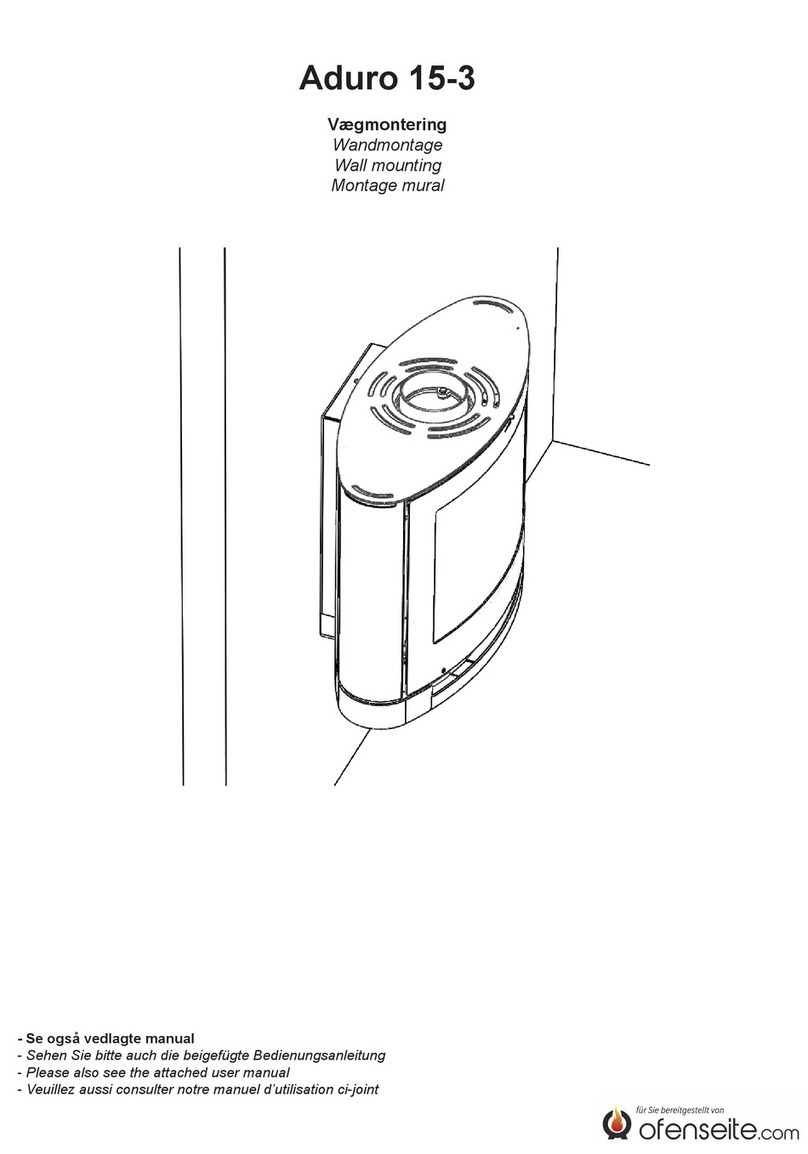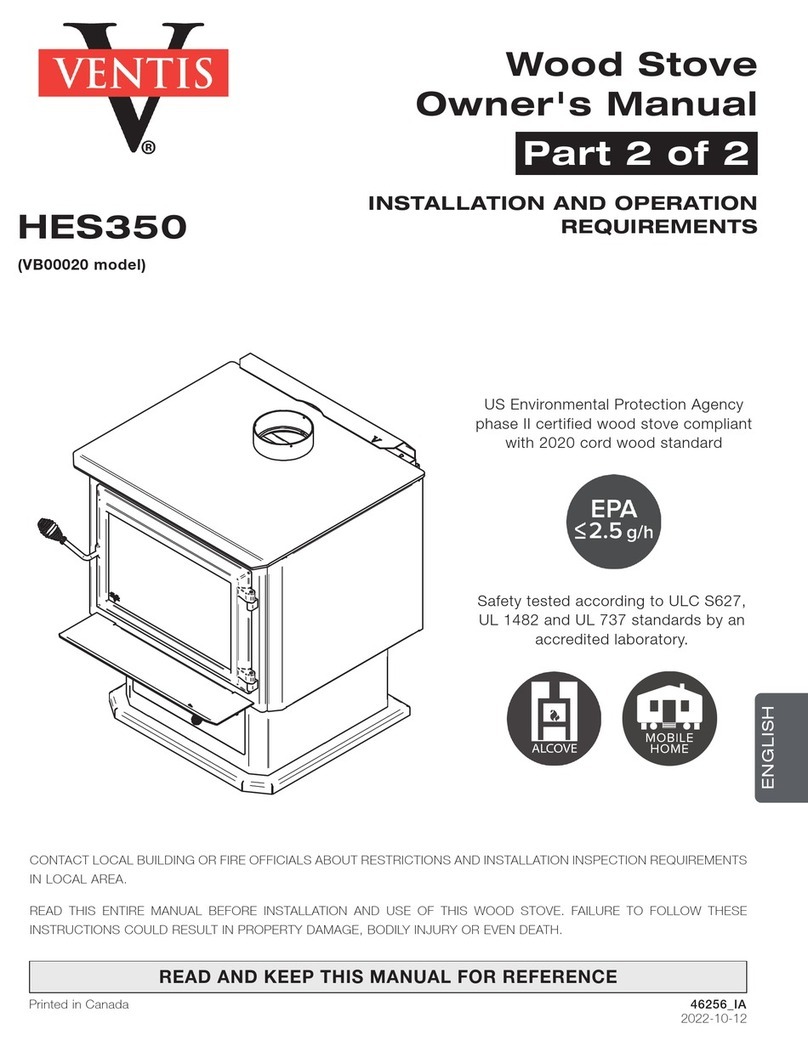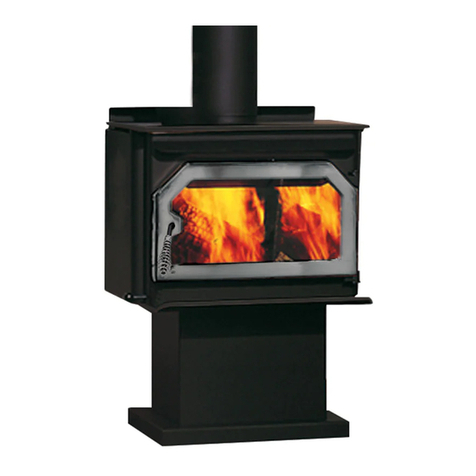
Harman Oakwood 7
Always wear gloves when
operating the stove. OPERATION Do not burn wet wood!
The Stove
Doors
Your stove has a large glass-paneled door for loading
and re viewing, a separate smaller door for removing
ashes and a top loading door.
Front Door
Before opening, always check for wood, embers, or
ash that may be ready to fall out of the door.
To open the glass door, open the bypass damper rst,
then lift the handle and pull out; to close the door, push
the door closed with the handle in the open position, then
push the handle down to engage the latch.
Ash Door
To open the ash door, lift up the handle and pull out.
Close the door by pushing in and pushing the handle all
the way down.
Top Load Door
To open the top load door, open the bypass damper
and then lift to open the top load door.
All doors must be closed while the stove is in normal
operation, and the gaskets routinely examined for wear
andreplacedwhennecessary. Gooddoorsealsareimpor-
tant for maintaining control of the stove. Never operate
with the ash door open. Operating the stove with the ash
door open, or with a door inadequately sealed, could
create a serious overring condition (discussed later in
this section).
NEVER OPERATE WITH MORE THAN
ONE DOOR OPEN ATATIME
The glass used in your Oakwood is manufactured to
exact standards to withstand the high heat of the re, but
like all glass, it must be treated with common sense and
care. Never abuse the glass by slamming the door shut
or striking the glass with a heavy object. If the glass is
broken or damaged, do not operate the stove until it has
been replaced
(See instructions in the Maintenance section.)
Grates
The Harman Oakwood's unique grate system consists
of one at bottom grate, and two front andirons. The bot-
tom grate has slots which allow the ash to fall into the ash
pan by passing a poker back and forth across the grate.
The andirons keep the fuel from coming into direct con-
tact with the glass, and keep hot coals and embers from
spilling out while reloading. Never build a re directly
against the glass.
The grates and andirons must remain in place at all
times. Do not tamper with or change the conguration
of this grate system.
GeneralConsiderations
Draft
Before you install and operate your Oakwood
wood stove, please read the entire contents of this
manual. Pay particular attention to the explana-
tion of draft and its effect on stove performance in
the Installation section. By following the installation and
operatingguidelines,youwillensureproperdraftandgain
maximum efciency and enjoyment from your stove.
Fuel
Your Oakwood burns wood very efciently. Here
are some guidelines that will help you achieve the best
performance.
Select only dry,seasonedwood. Wood for burning
should never be exposed to rain or extremely damp con-
ditions. Hardwoods are favored because they are heavier
and contain more heating capacity (BTU’s) per load than
dosoftwoods. Fuelwoodshouldbesplitandstoredunder
cover for “seasoning” - at least a year is recommended.
Your stove is not an incinerator - do not burn garbage,
painted or treated wood, plastic, or other debris.
Keepthe area aroundthestovefree from clutter. Keep
allcombustibles,includingfuel,beyondthecode-required
clearance distance (48" or 1215 mm in the U.S., 1525
mm or 60" in Canada). Never store fuel in front of the
stove where it could interfere with door operation, safe
loading, and ash removal.
Donotburngarbageorammableuidssuch
asgasoline,naptha,orengineoil.
CAUTION:
Alwayswearreretardantgloves
whenoperatingthestove.
SAFETY NOTICE
IF THIS APPLIANCE IS NOT
PROPERLY INSTALLED, OPERATED
AND MAINTAINED, A HOUSE FIRE
MAY RESULT. FOR YOUR SAFETY,
FOLLOW INSTALLATION DIRECTIONS.
CONTACT LOCAL BUILDING OR FIRE
OFFICIALS ABOUT RESTRICTIONS
AND INSTALLATION INSPECTION
REQUIREMENTS IN YOUR AREA.
